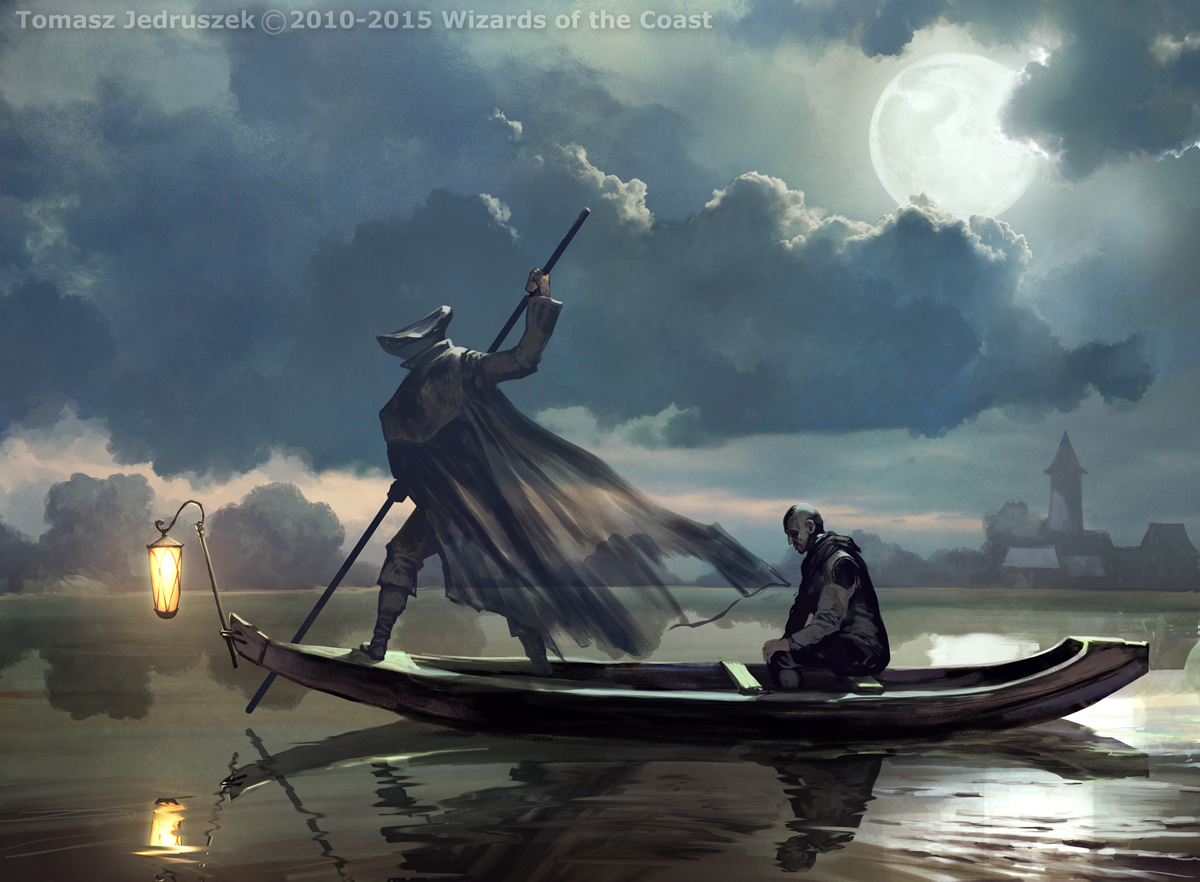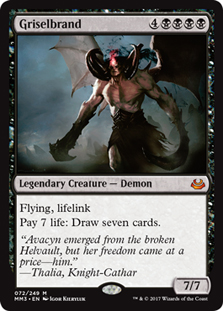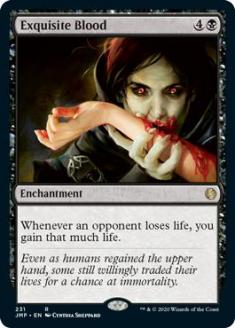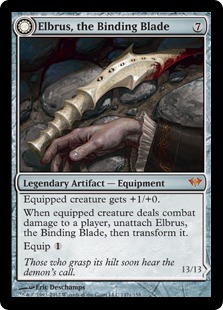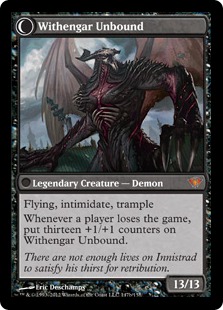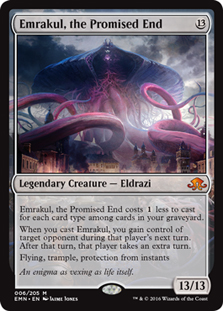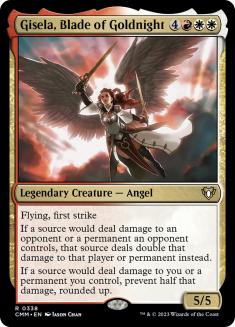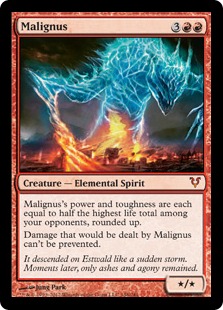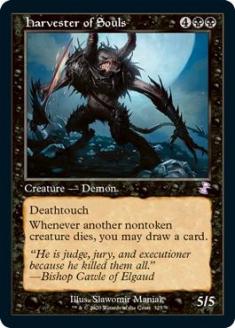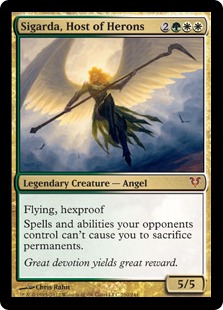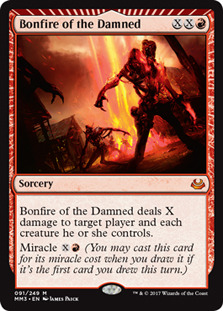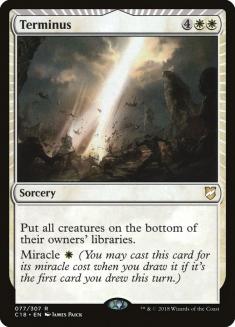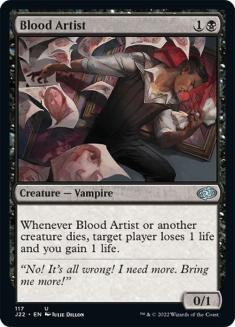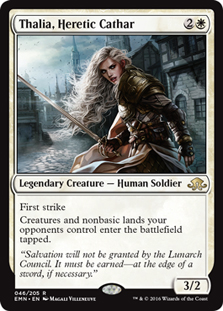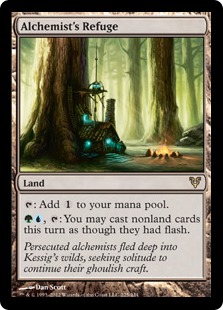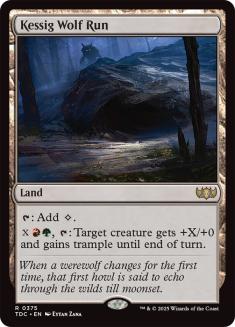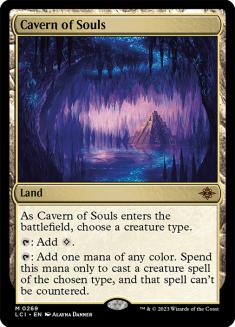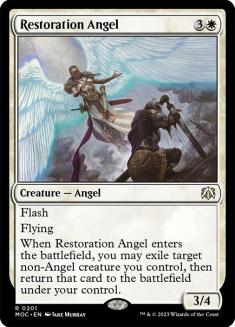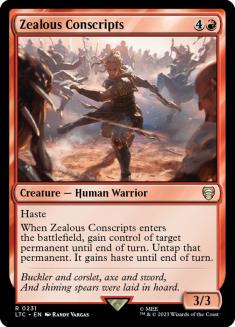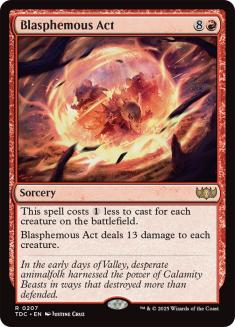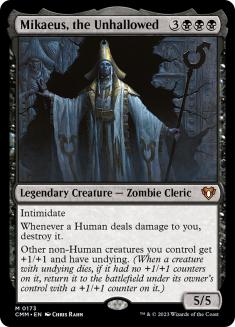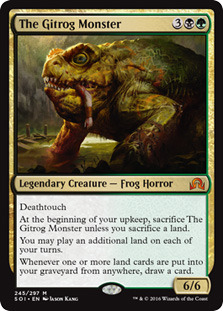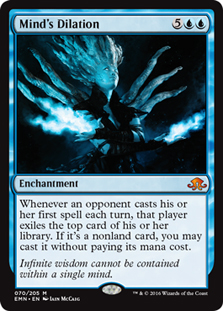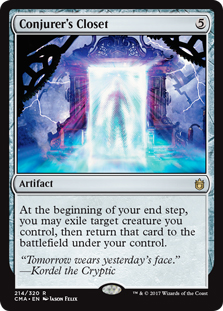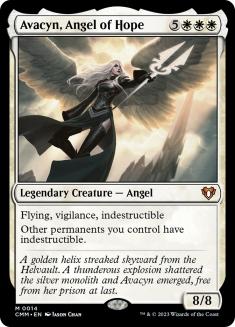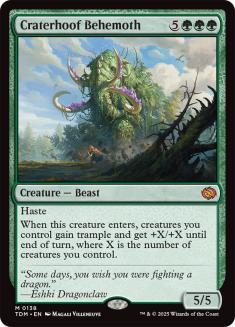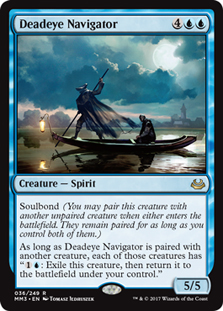It’s a pulse-pounding world full of Werewolves and Vampires, Angels and Demons, Humans and the Zombies that unfortunately result. Innistrad is arguably the most popular Magic plane of all time, and it’s about to get more so. Full preview season for Innistrad: Midnight Hunt opened this past Thursday (although we had already gotten a sneak peak a few weeks prior). As we start getting into the future, I thought it’d be the right time to look into the past for the best of the best in this most thrilling of planes.
Part of this thought came out of the fact that the Commander Rules Committee (RC) is going do some sort of all-Innistrad Constructed feature for our stream. The first thing that came up is defining which expansions qualify. We have the first block (remember blocks?) of Innistrad, Dark Ascension, and Avacyn Restored in 2011. Weirdly, because it kind of reboots the story, I’ve heard some folk say they don’t think the latter belongs. I’m having trouble processing that. The other argument against it is that it doesn’t have a mechanical resonance with the rest, which I suppose I get — but it’s still set on the Innistrad plane.
Then in 2016, we went back with Shadows Over Innistrad and Eldritch Moon. Again, I’ve heard a thought or two that the latter shouldn’t apply since it also reboots things, but I’m again left scratching my head. I’m fully happy with those five sets being what we call Innistrad Constructed, or what Commander Advisory Group (CAG) member and five-tool threat Olivia Gobert-Hicks dubbed “Eldritch Dragon Highlander.”
There are lots of great cards from the thousand-plus choices among the sets. I was happy to have such difficult choices winnowing down the list. Please remember that as I talk about these cards, I’m doing so in the context to the format’s target demographic. Certain cards that see play only at the high-powered end, like Druids’ Repository and Laboratory Maniac, won’t make the list regardless of their significance there. Despite their value and popularity, I also didn’t add some of the checklands, like Clifftop Retreat, Hinterland Harbor, Isolated Chapel, Sulfur Falls, and Woodland Cemetery. They nonetheless deserve their own honorable mention. They came at a time when other multicolor land options were on the upswing of getting super-expensive, giving us some hope for an affordable manabase. Speaking of honorable mentions, let’s get cracking.
Honorable Mentions: Altered Ego, Angel of Jubilation, Anguished Unmaking, Archangel Avacyn, Avacyn’s Pilgrim, Ghost Quarter, Grafdigger’s Cage, Gavony Township, Mentor of the Meek, Parallel Lives, Primal Surge, Rooftop Storm, Snapcaster Mage.
25. Griselbrand
I couldn’t do a list without mentioning the five sets’ only banned card — and it’s a doozy. It had one of the shortest runs ever in the wild, just a few weeks. It’s busted as hell and is very likely to stay where it is for a long time. It’s on this list because it’s an important card in the context of the format.
24. Exquisite Blood
Part of the famous Blood Bond combo with Sanguine Bond, it’s an easy and inexpensive kill of the table. Even if you’re using it just for the lifegain, it’s a solid choice in your black decks. The card doesn’t care if you caused the life loss or not, and people are going to attack each other. If the situation is favorable for them, they’re not going to care about your lifegain.
23. Elbrus, the Binding Blade
Speaking of important, Elbrus, the Binding Blade is important in talking about both color identity and what’s a valid commander. Color identity looks at both faces of a transforming card, adding them together. This makes the CI of the card black. When it comes to what can be a legal commander, we look only at the front face of a card. That’s because the front face is the default face of the card. Rule 712.4 tells us all we need to know: “While a double-faced card is outside the game or in a zone other than the battlefield or stack, it has only the characteristics of its front face.” It’s the only face we can evaluate for commander-ness.
22. Emrakul, the Promised End
As powerful (and some say annoying) as the card might be, I may have selfish motivations for putting this card on the list. From the SCG CON (and Snowed-In LobbyCon) in December 2018, I’ll let the picture do the talking. That’s my card on top.
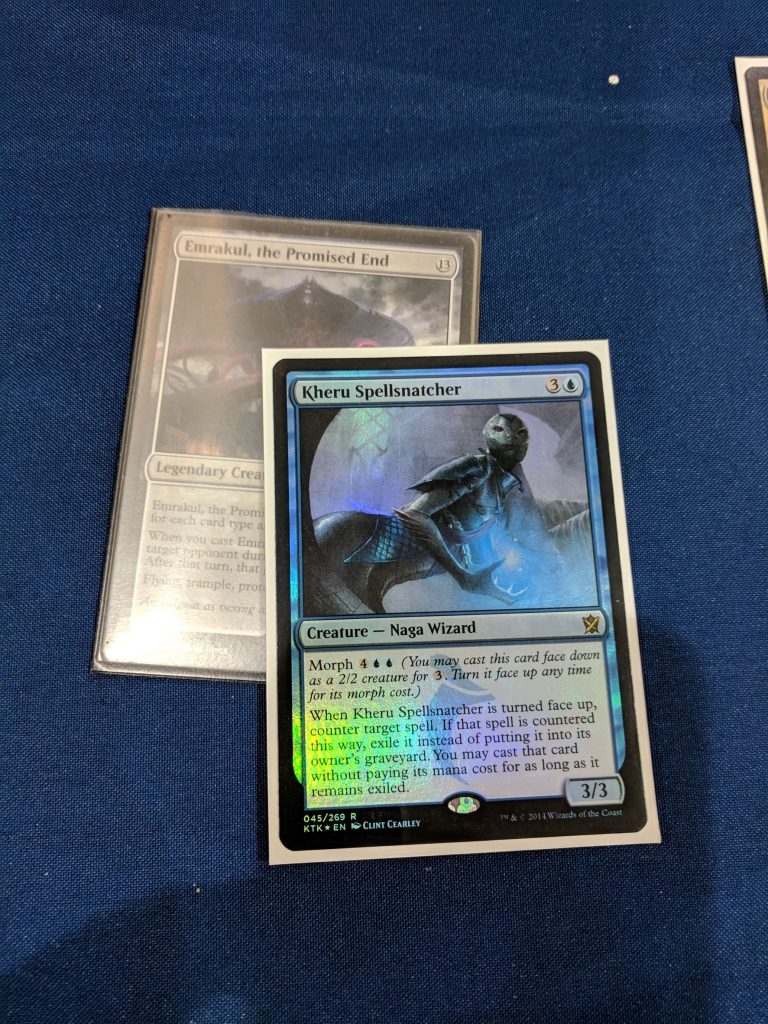
When I cast the Emrakul, due to the Law of Names and Nations, I targeted its owner with the cast trigger. He smiled wryly. When we got to his turn, it became obvious why. He had Hatred in his hand. These are the moments that Commander was built for.
21. Gisela, Blade of Goldnight
When someone says beatstick, I think of Gisela. Not only does it offer a great incentive to attack your opponents, especially when they’re running any lifelink creatures, it also diminishes the value of attacks against you. While the defensive part is great, Gisela shines as an offensive weapon. She attacks for ten on her own, and that’s only the beginning. She’s definitely a remove-on-sight when someone else casts her. Or Clone first, then remove.
20. Malignus
A five-mana 20/20 or bigger? I’m on board. What I think some folks forget about with Malignus is that the damage dealt by it can’t be prevented. A blocking creature with protection from red will still die. And you can just get out of here with that Maze of Ith, Mr. Scott Larabee.
19. Harvester of Souls
Usually black has to rely on paying life to draw extra cards. Enter Harvester of Souls, which will draw extra cards for nontoken creatures dying. Making that happen is something black does extremely well.
18. Sigarda, Host of Herons
Perhaps fading in popularity these days, Sigarda remains a strong contender for me. What does it say about creatures in 2021 that a five-mana flying, hexproof 5/5 with an extremely relevant ability is somewhat of a disregarded card? Classically it’s part of protecting your team when you also have Avacyn, Angel of Hope on the battlefield. I think too many people are sleeping on Sigarda.
17. Bonfire of the Damned
The first of the sweepers on the list, World Magic Cup winner Bonfire of the Damned is a card you love to see on your first draw of the turn. If you don’t want to trust things to luck, you can always run some top-of-library control, like Scroll Rack. It’s not killing the table, but it’s sure wrecking someone’s day.
16. Terminus
When Terminus came out, you could still tuck someone’s commander. Although that’s not the case anymore, it still gets around indestructible, which is way more common than it was in the past. The miracle cost is pretty sweet, but I almost never mind paying the full six, since I put it in the deck to do exactly what it does.
15. Blood Artist
One of the few uncommon cards on this list, Blood Artist has already run out of belt to put notches on in Commander games. It’s a simple thing, but it just keeps giving value a little bit at a time, dropping those life totals until they get to the point that a sweeper will be a game-winner.
14. Thalia, Heretic Cathar
A soft Stax component, this Thalia version is what I consider reasonable protection in the format. It doesn’t lock down anyone or prevent them from casting stuff; it just slows down greedy manabases and keeps haste creatures off your face. I find this eminently fair.
13. Alchemist’s Refuge
The checklands aren’t the only ones to get some love in our extended block. Alchemist’s Refuge lets you keep up mana for interaction, then deploy your permanents at the end of turn of the player on your right. At the low cost of three mana (two plus the fact that you have to tap the Refuge), you can foist some pretty big surprises on folks. It’s no Vedalken Orrery, but it also can’t be Disenchanted.
12. Kessig Wolf Run
The land hits keep on coming and this one leads directly to player elimination. It’s a huge threat from the time it hits the table and justifiably eats land destruction. While it’s nice to load a big pile of mana into it, I’ve also just used it to give something trample for the kill. It’ll be thematically pleasing to use it on any new Werewolf creatures from Innistrad: Midnight Hunt.
11. Cavern of Souls
The third in our land trifecta, Cavern of Souls keeps your tribal decks humming by not letting important creatures get countered. The only unfortunate part of the card is that, despite being reprinted in Modern Masters 2017, it’s pretty expensive. Otherwise, I’d expect to see it in most Commander decks, simply naming your commander’s creature type. It wouldn’t even need to be a tribal deck for Cavern of Souls to be valuable. Here’s to it getting reprinted into affordability.
10. Restoration Angel
Flash it in to protect your creature from a removal spell or being on the bad end of a combat trick. Flash it in to get another instance of a great enters-the-battlefield ability (or leaves-the-battlefield, like Reveillark). However you slice it, Restoration Angel offers value every time you play it. Just be careful that you don’t swear at yourself on camera because you forgot about the non-Angel part and tried to target your Karmic Guide (example definitely not taken from real-world experience).
9. Zealous Conscripts
You don’t need to grab Kiki-Jiki, Mirror Breaker and go infinite with Zealous Conscripts for it to be really good. Simply snagging any relevant permanent can be a game-changer, whether it’s the last blocker someone has or a still-tapped Nevinyrral’s Disk. I’ve never seen it happen, but it’d be really cool if another player had Kiki-Jiki on the battlefield when you play Zealous Conscripts, which is a legal target for Restoration Angel.
8. Blasphemous Act
Sweepers in the form of damage can be expensive to cast, since they generally involve an X in their cost. Cut from the same victorious stalk as Chain Reaction, Blasphemous Act generally costs just a single red in Commander games. It’s also not usual to have it played alongside Repercussion in order to kill the table.
7. Mikaeus, the Unhallowed
Part of the famous Mike and Trike combo with Triskelion, Mikaeus is another card you don’t need to go infinite with to get some pretty extreme value from. It’s clearly good in any black creature-based deck that’s not Human Tribal. What folks tend to forget is that it has intimidate and can be an offensive force while it’s being a strong utility creature.
6. The Gitrog Monster
From the Dredge player to one who just likes sacrificing lands, The Gitrog Monster is your Frog. It seems under-costed as a five-mana 6/6 with deathtouch. I suspect the ability forcing you to sacrifice lands would be seen as a drawback, meriting the mana cost reduction. Good players have turned it into a benefit. However it came about, The Gitrog is a Monster in more than one sense of the word.
5. Mind’s Dilation
Arguably one of the most reviled cards in Commander, Mind’s Dilation is everything that a seven-mana enchantment should be. Getting to cast things without paying their mana cost is something to watch out for, but it’s limited to one per turn for each opponent and you can’t get land. The dream play here is to get someone’s Counterspell on the trigger, but that’s a bit of a fantasyland. The actual dream play is to get something so strong off Player B that Player C feels compelled to counter it — and getting another counter off them.
4. Conjurer’s Closet
I think enters-the-battlefield triggers are my favorite Magic mechanic, so it’d follow that Conjurer’s Closet is a favorite card. I’m playing it in Lavinia Blinks for obvious reasons. It’s in The Threat of Yasova so that I can borrow your creature during combat and then keep it permanently. It’s in Borrowing Stuff at Cutlass Point for the same thing. Some amalgam of both reasons is true for Aminatou’s Demons. It’s in the Rith Do-Over since it’s essentially also a blink deck. In all of them, it’s there because it sparks joy.
3. Avacyn, Angel of Hope
Big Avacyn creates a battlefield where you can do quite a lot without fear of your stuff getting destroyed. Classic play lines involve sweepers and even a strategically appropriate Armageddon, which I find fine as a finishing move. You have to be careful that you don’t get Avacyn bounced in response to your thing that wipes out everyone’s stuff. Still, the worst case in that event is parity and you still have an Avacyn in your hand.
2. Craterhoof Behemoth
The card that has come to define “cheated-out win condition,” Craterhoof Behemoth has remained a popular card since its release, at least as far as online data goes. Often combined with Avenger of Zendikar in a Tooth and Nail entwinement, Craterhoof Behemoth is an object lesson in playing your Fogs. I still haven’t seen an Inkshield in response to one, but I will certainly enjoy it when I do.
1. Deadeye Navigator
A card that once bordered on ubiquity such that there were calls for several years for it to be banned, Deadeye Navigator could take over a game when soulbonded with any number of creatures. Mystic Snake was a particularly oppressive option. While Deadeye Navigator’s popularity has certainly waned, I want to make sure we never forget its impact on the format. It was at times philosophically divisive, since the RC saw it was strong but not bannable and a vocal portion of the community disagreed. It’s a card that we constantly talked about in quarterly meetings, until we just didn’t anymore. It’s a pretty strong example of a card that we were sure that players would enjoy abusing for a while and then get bored with. It didn’t hurt that creatures continued to get stronger and cheaper, slowly pushing Deadeye Navigator off the top of the heap.
While some of the cards on this list, now five or ten years old, may be unknown to newer players and have faded a bit in the eyes of long-experienced ones, many of them are still format-defining — not just for what they did in-game, but outside of it as well. They represent a time when Commander was beginning to grow into the most popular format ever and helped it skyrocket in popularity. I trust that with two Innistrad-based sets upcoming, we’ll see a resurgence of some of them as they pair in compelling fashion with newer cards.
Visit my Decklist Database to see my Signature Decks, the Chromatic Project, and more!

